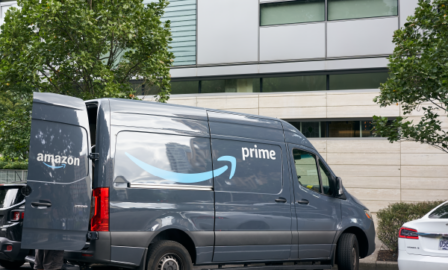2022 eCommerce Trends
Read our updated trends report here: 2023 eCommerce Trends
The retail industry as a whole is continuing to experience significant shifts in channel distribution, rooted in consumer preferences and socioeconomic events. As the world shifts to a hybrid environment, consumers are purchasing goods across digital and physical channels, with the lines blurring into one seamless purchasing experience. With that said, pure-play eCommerce brands as well as incumbent retailers see the need to be nimble and push the boundaries when selling in digital channels. As the eCommerce landscape is continuously evolving, we are seeing the following key trends stand out this year: Download the Full 2022 eCommerce Trends Report Here
2022 eCommerce Trends
We’re watching these seven eCommerce trends take shape this year:
Trend #1: Digital and Mobile Payment Options
The number of mobile/wireless commerce has grown dramatically in recent years, as evidenced by approximately 51% of American adults now using at least one form of contactless payment. Businesses are expanding their digital and mobile payment options to meet consumer demand for contactless, frictionless, and speedier payments. The growing popularity of digital wallets and QR codes provides a secure transaction and gives the consumer access to multiple forms of payment with the push of a button.
We have seen a permanent behavioral switch to digital that won’t be going anywhere anytime soon. The rising adoption of mobile wallets among small and medium-sized enterprises and local businesses is anticipated to boost the market growth in the forecast period as well. Globally, digital banking users are expected to cross the 3.6 billion-mark by 2024. During this rise, expect to see a lot more biometric authentication used to secure digital wallets.
Trend #2: Social eCommerce on the Rise
Social platforms are the entry point for almost everything we do online – news, entertainment, and communication. Commerce has joined this mix as companies move to social media to increase sales traffic. Some of the most used social media platforms, such as Instagram, TikTok, and Pinterest, are taking advantage of increased screen time by implementing scroll-through advertisements to create an immersive and interactive customer experience. Phrases such as “swipe up to purchase” or “store link in bio” have become extremely popular calls to action, pushing social media users to purchase the items or services they see advertised on their newsfeeds. One study shows that 31% of consumers are using their mobile phones to shop or browse for products each week.
In the U.S., social eCommerce sales are expected to reach $36 billion dollars this year. One example of how businesses can augment their social commerce presence and increase their customer base is through integrating their Shopify platform with a TikTok business account. Instagram has also evolved into a shopping platform, with ad reach skyrocketing past Facebook’s right now. This year, Facebook’s global advertising reach only increased by 6.5%, while Instagram’s grew by 20.5%.
Download the Full 2022 eCommerce Trends Report Here
As consumers continue to explore the digital landscape for their shopping and purchasing journeys, we expect to see social platforms continue to grow in popularity and use over the next year.
Trend #3: Buy Now, Pay Later for Purchases
Paying for purchases with tailored, flexible buy now, pay later (BNPL) plans – for even small ticket items – is predicted to be one of the fastest-growing payment trends in 2022.
Purchasing any retail item with the BNPL plan is easier now more than ever, thanks to services like Klarna, PayPal, and Afterpay. Especially popular with millennial and Gen Z consumers (nearly 75% of consumers in these demographics use BNPL solutions), the top reasons users report using BNPL plans are to avoid credit interest payments and to make large purchases that they otherwise couldn’t afford.
However, BNPL is a relatively unregulated payment method and requires little information from the consumer signing up. Because of the ease of getting these loans, consumers can quickly rack up more debt than anticipated. In the coming year, we can expect to see more regulation and interest rates on these types of purchases, as the Consumer Financial Protection Bureau (CFPB) has begun an investigation into regulation laws of BNPL solutions.
Businesses looking to be competitive and appeal to consumer preferences should consider the risks and benefits of implementing a BNPL plan. To be successful, BNPL providers must carefully balance their cost of funds with their ability to assess credit risk as well as work with a trusted payments partner to help to navigate regulations that may impact this space over the next year and beyond.
To view the four other 2022 eCommerce trends, continue reading by downloading the full report below, and learn more about our eCommerce Consulting Services here.
Download the Full 2022 eCommerce Trends Report Here
Read last year’s eCommerce Trends Report here.
Subscribe to Clarkston's Insights
Contributions from Julia Hoffman



